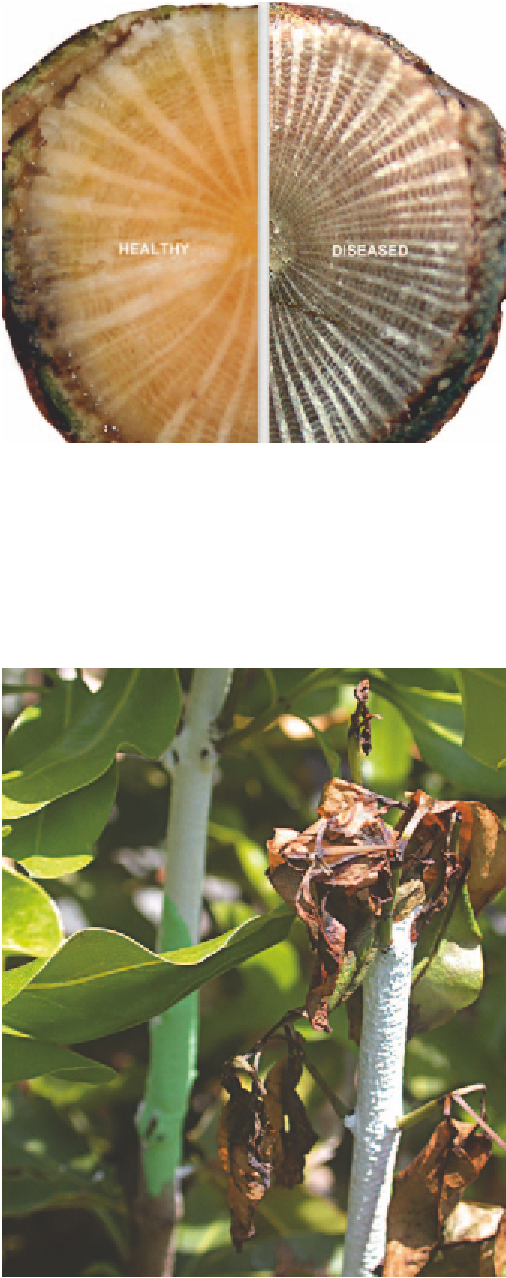Agriculture Reference
In-Depth Information
Phomopsis
cankers cause rapid death of branches up to
15 mm in diameter. Leaves turn brown and remain
attached to infected branches. When the bark is peeled
from infected areas, a pattern of narrow dark lines is
often seen on and in the woody tissue.
Source of infection and spread
The
Phomopsis
fungus colonises leaves, twigs, husks,
structural parts of the inf lorescence and branch tissue in
which it produces fruiting bodies. In wet weather, the
sticky spores from the fruiting bodies are dispersed via rain
splash to fruits and other plant parts where new infections
occur, particularly at injury sites. Spores can also be spread
during grafting.
Importance
Severe economic loss has occurred sporadically in
Queensland macadamia plantations. Infected scions may
sometimes cause graft failures.
Fig 11.6 Phomopsis stem rot showing cross sections of a healthy stem
(left) and a diseased stem (right)
.
do not have a halo and the tissue is soft in contrast to husk
spot caused by
Pseudocercospora macadamiae
. Under moist
conditions, minute (pinprick-sized) black fruiting bodies
rupture the husk surface and exude pale, pearly white
tendrils of sticky spores.
Management
•
Follow good hygiene practice during grafting and
removal of dead twigs in the tree canopy.
Prune and destroy branches with cankers during the
winter or dry summer months.
•
Note that no separate fungicide application is required if
fungicides are applied annually for husk spot control.
RACEME BLIGHT OR GREY MOULD
■
Cause
The fungus
Botrytis cinerea
.
Symptoms
Botrytis cinerea
readily colonises senescing petals but can
also cause small, brown spots on small f lower buds, f florets
and rachises. Under cool, wet conditions, the entire raceme
at anthesis stage may be blighted within a few days,
becoming brown to dark brown in colour. The necrotic
f flower parts often remain attached to the f flower stalk and a
grey mould or fuzzy growth develops on this tissue. All
parts of the blossom and rachis may be affected, but the
young fruits are not usually blighted and become resistant
to infection as they mature.
Source of infection and spread
The fungus infects numerous plant species and forms dark,
resting structures called 'sclerotia', which survive for many
Fig 11.7 Dieback caused by
Phomopsis
sp. Leaves have turned
brown and remain attached to affected branches.












